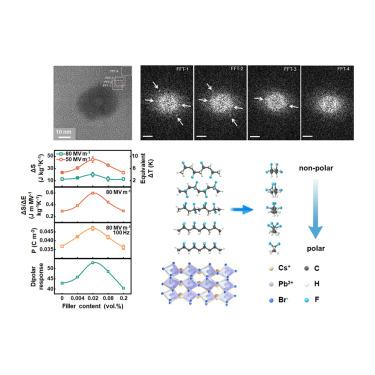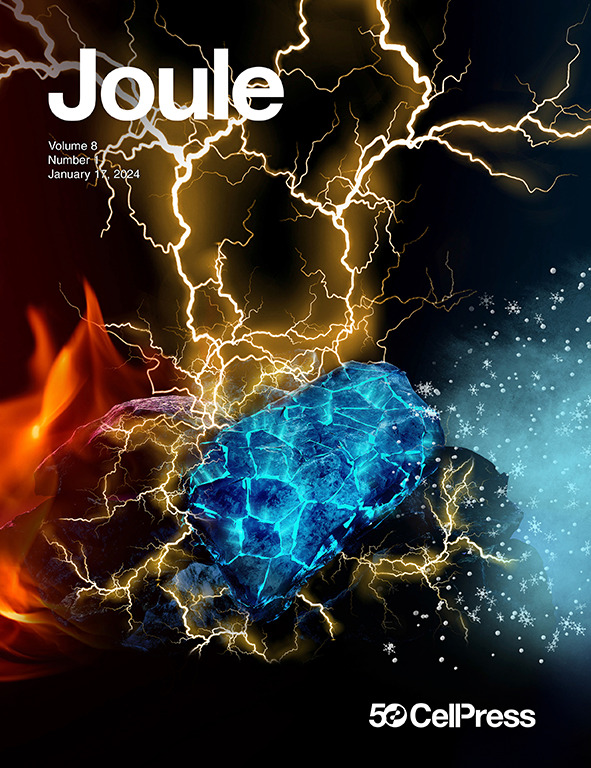微量的钙钛矿量子点增强了稀释纳米复合材料的电热冷却性能
IF 35.4
1区 材料科学
Q1 CHEMISTRY, PHYSICAL
引用次数: 0
摘要
高性能电热(EC)冷却装置的发展需要在实际电场下表现出强大的EC效应并适合工业规模生产的材料。弛豫铁电聚合物纳米复合材料是一种很有前途的途径。然而,在当前的纳米复合材料中实现高EC响应通常需要填料含量超过5 vol %,导致材料不均匀性,限制了实际应用。在这里,我们介绍了一种使用纳米复合材料的新方法,该方法利用界面效应来放大偶极响应,从而显着减少必要的填料含量。我们证明,仅将0.02 vol %的CsPbBr3钙钛矿量子点加入到P(VDF-TrFE-CFE)中,其EC效应翻了一番,填料含量比先前报道的要低一个数量级。我们的发现为稀纳米复合材料如何增强聚合物材料中的偶极响应提供了清晰的结构理解,并将这一有前途的概念扩展到铁电材料中,以改善偶极响应相关的性能。本文章由计算机程序翻译,如有差异,请以英文原文为准。


Infinitesimal amount of perovskite quantum dots enhances electrocaloric cooling performances in diluted nanocomposites
The advancement of high-performance electrocaloric (EC) cooling devices necessitates materials that exhibit robust EC effects under practical electric fields and that are suitable for industrial-scale production. Relaxor ferroelectric polymer nanocomposites represent a promising avenue. However, achieving high EC responses in current nanocomposites typically requires filler contents exceeding 5 vol %, resulting in material nonuniformity that limits practical applications. Here, we introduce a novel approach using nanocomposites with infinitesimally low loading of fillers that exploits interface effects to amplify dipolar responses, thereby significantly reducing the necessary filler content. We demonstrated that incorporating only 0.02 vol % CsPbBr3 perovskite quantum dots into P(VDF-TrFE-CFE) doubled the EC effect, with a filler content an order of magnitude lower than those previously reported. Our findings provide a clear structural understanding of how dilute nanocomposites enhance the dipolar response in polymeric materials and extend this promising concept for improved dipolar response-related properties to ferroelectric materials.
求助全文
通过发布文献求助,成功后即可免费获取论文全文。
去求助
来源期刊

Joule
Energy-General Energy
CiteScore
53.10
自引率
2.00%
发文量
198
期刊介绍:
Joule is a sister journal to Cell that focuses on research, analysis, and ideas related to sustainable energy. It aims to address the global challenge of the need for more sustainable energy solutions. Joule is a forward-looking journal that bridges disciplines and scales of energy research. It connects researchers and analysts working on scientific, technical, economic, policy, and social challenges related to sustainable energy. The journal covers a wide range of energy research, from fundamental laboratory studies on energy conversion and storage to global-level analysis. Joule aims to highlight and amplify the implications, challenges, and opportunities of novel energy research for different groups in the field.
 求助内容:
求助内容: 应助结果提醒方式:
应助结果提醒方式:


